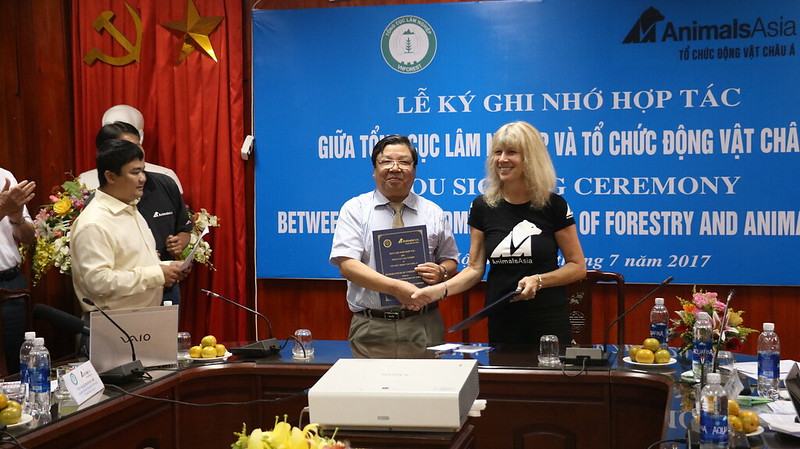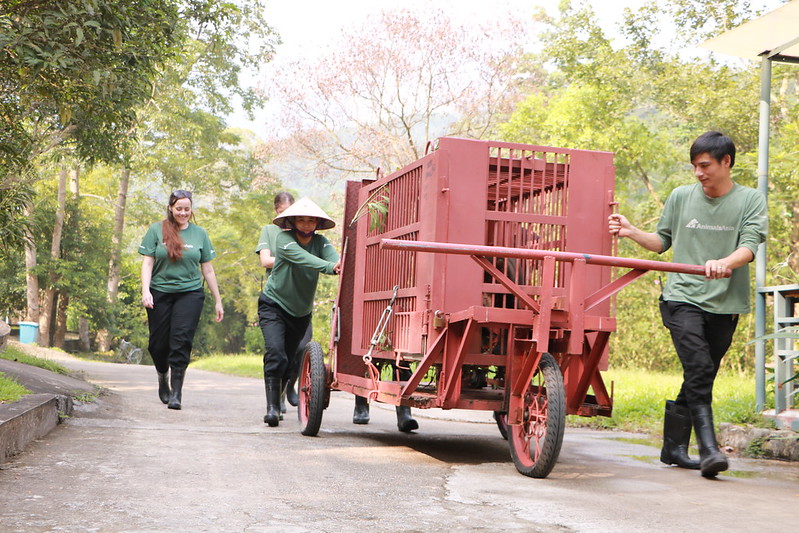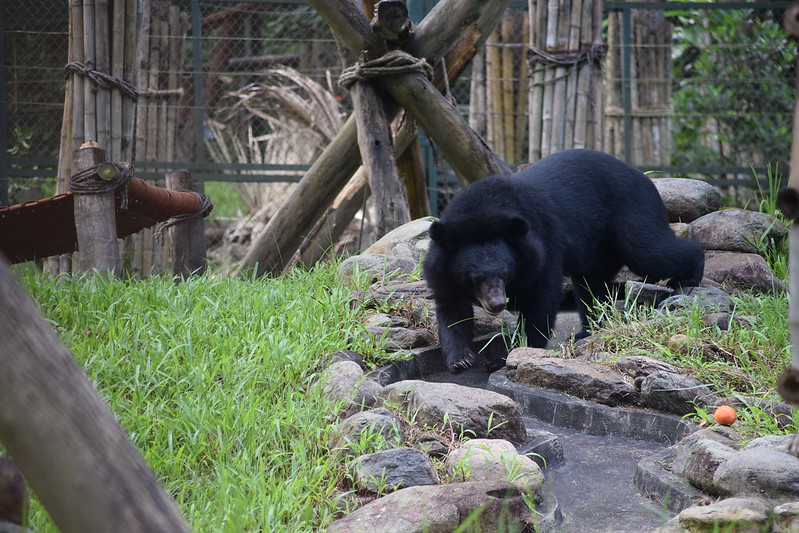REPORT: Vietnam has agreed to end bear bile farming – here’s what happens next
16 August 2017
After the historic agreement to end bear bile farming in Vietnam, here’s what needs to happen to get from 1,000 caged bears in cages, to none.
By Vietnam Director Tuan Bendixsen
By pledging to completely end bear bile farming in Vietnam, the government has accepted a huge challenge.
But it’s one neither Animals Asia nor the government would have accepted if we didn’t think it was achievable.
The MOU itself has a five-year timeframe and this is what the Vietnam government is working towards, no more bears in cages by the summer of 2022.
But Animals Asia is hopeful this can be achieved earlier – particularly in light of our agreement with Vietnam’s Traditional Medicine Association to completely end the prescription and sale of bear bile among traditional medicine practitioners by 2020.
First steps
The first step is for Animals Asia and Vietnam’s Nature Conservation Department to finalise an overarching plan for the whole process.
That entire project – with solutions for every problem – will need to be rubberstamped by government before the process can begin.
To get an idea of the scale, the first task on the agenda is re-checking the farms in every province to find out exactly how many bears there are.
The government has been using the figure of 1,200 – but that is a 2015 figure, and we believe the true number is closer to 1,000.
Either way, we have to know for sure so that we can plan how much sanctuary space is required.
The good news is that the framework for this plan has already been drawn up it’s just the details that need to be hammered out.
This will include how many sanctuaries to build, sourcing potential locations, agreeing funding solutions, assigning management responsibilities, drawing up a comprehensive conservation plan and details on how to physically move the bears from farms to safety.
We’re hopeful that the draft will be ready in six months and it will receive input from other charities working in the sector and other departments of government before being approved.
While bear rescues will continue in the meantime – such as those Animals Asia has continued to oversee – we’re hopeful, the first bears could start to move from cages to sanctuaries around this time next year as part of the MOU.
Resources are the biggest obstacle
If resources were no object, we would simply build as many sanctuaries as we need all at once and transport all the bears in one go.
But right now, resources are the single biggest obstacle to a bear bile free Vietnam.
We estimate the cost of building enough sanctuaries, running them for a year and transporting all the bears at around USD$15-20 million.
This is money neither the Vietnam government, Animals Asia, nor any single NGO has available.
Rolling up the industry
So with a period of mass building and a single vast transportation of bears ruled out, the plan is to build the sanctuaries one by one as resources become available.
Then, once sanctuary space is ready, the bears can be transported. With provinces becoming systematically emptied of bears - one at a time. The authorities have dubbed this, the “rolling up” of the industry – like rolling up a mat.
Just as Animals Asia ended bear bile farming in the province of Quang Ninh in 2015, the same process will be carried out in each of the approximately 40 provinces and cities where bile farming persists.
And once the cages are empty – they can never be refilled.
The legal loophole and grey area of ownership, which has allowed bear bile farming to persist, will be closed. Forever.
After that point, there will be no confusion. Any bear in private hands will be illegal. And the cruelty of bear bile farming will be a thing of the past.
Further reading:
Vietnam agrees plan to close all bear bile farms
Explained: The roadmap to ending bear bile farming in Vietnam
Reaction: how the plan to rescue 1,000 bears was received
Why bear bile farming persists in Vietnam
BACK






